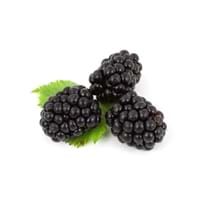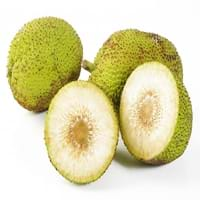Health Benefits
Cancer prevention, Heart care, Increases metabolic rate, Reduces stress, Treatment of dysentary, Treatment of skin Diseases
Cancer prevention, Heart care, Maintains healthy cholesterol level, Treatment of skin Diseases
General Benefits
Digestive aid, Maintains healthy cholesterol level, Strengthens bones
Boosts immune system, Digestive aid, Helps in weight loss, Maintains healthy cholesterol level
Skin Benefits
Hydrates skin, Skin rejuvenation, Skin revitalization
Anti-aging benefits, Skin rejuvenation, Treatment of skin diseases
Hair Benefits
Promotes longer and healthier hair
Protects hair, Regulates hair growth, Treatment of dandruff
Allergy Symptoms
Facial muscle tension, Pressure in sinus, Respiratory congestion, Runny nose, Sneezing, Tingling sensation in wrist and face
Hives, Inflammation of nose, Swelling of mouth, tongue or lips
Side Effects
Nausea, Vomiting, Might cause change of urine color
Allergic reaction
Best Time to Eat
Best if taken as a breakfast (or empty stomach), As a snack in the late afternoon, Don't consume at night and before bed, Eat the fresh ones, avoid mixing with any other foods, don't eat after meal., Morning time (before lunch)
Along with meal, As a snack in the late afternoon, Don't consume at night and before bed, Don't eat after meal
Vitamin B5 (Pantothenic Acid)
Vitamin C (Ascorbic Acid)
Vitamin K (Phyllochinone)
Calories in Fresh Fruit with Peel
Not Available
Calories in Fresh Fruit without Peel
Not Available
Calories in Frozen Form
Not Available
Calories in Dried Form
Not Available
Calories in Canned Form
Not Available
Calories in Jam
Not Available
Calories in Pie
Not Available
Type
Berry
Fruit vegetable, Tropical
Season
Spring, Summer
All seasons
Varieties
Prime Ark, Prime Jim, Illini Hardy, Kiowa, Shawnee, Apache, Arapaho, Chester, Hull, Natchez, Navaho and Triple Crown and Von
Koqo, Tamaikora, Temaipo, Uto Kuro, Samoa, Buco Ni Viti and Kulu Dina
Color
Purplish black
White, Yellow
Inside Color
Magenta
White
Origin
Asia, Europe, North America, South America
South Pacific
Soil Type
Well-drained
Loam, Sand, Sandy loam, Well-drained
Climatic Conditions
Dry, Warm to hot climate
Humid, Rainfall, Warm
Facts about
- There are around 2000 varieties of blackberries throughout the world.
- 80-85 degrees is the ideal temperature for its production.
- Leaves of blackberry tree are used to treat sore throats and mild inflammation of the gums.
- The milky sap of breadfruit tree is used as glue & bark is used to make papers.
- Breadfruit tree produces 1st fruit after 2-3 years from planting & remains productive for decades.
- The seeds of breadfruit are edible.
Top Producer
United States of America
Jamaica
Other Countries
China, New Zealand, Serbia, South Africa
Africa, India, United States of America
Top Importer
United States of America
United States of America
Top Exporter
Mexico
Jamaica
Botanical Name
Rubus Fruticosus
Artocarpus altilis
Synonym
Rubus Millspaughii or Rubus Laciniatus
Artocarpus communis or Artocarpus incisa
Subkingdom
Tracheobionta
Tracheobionta
Division
Magnoliophyta
Magnoliophyta
Class
Magnoliopsida
Magnoliopsida
Subclass
Rosidae
Magnollidae
Species
Rubus fruticosus
A. altilis
Generic Group
Rose
Mulberry
Compare Blackberry and Breadfruit
It is important compare Blackberry and Breadfruit as both the fruits have a different nutritional value. Their comparison can be done on the basis of their vitamin and mineral content, calories, benefits as well as characteristics, making it easier for us to choose the best fruit for our diet. Their general health benefits are as follows:
Blackberry Benefits: digestive aid, maintains healthy cholesterol level and strengthens bones.
Breadfruit Benefits: boosts immune system, digestive aid, helps in weight loss and maintains healthy cholesterol level.
Fruits are also used as a remedy for various hair problems. The hair benefits of Blackberry are: promotes longer and healthier hair and hair benefits of Breadfruit are: protects hair, regulates hair growth and treatment of dandruff. Some fruits are known to cause allergic reactions. The allergy symptoms of first fruit are: facial muscle tension, pressure in sinus, respiratory congestion, runny nose, sneezing and tingling sensation in wrist and face and the symptoms of second fruit are: hives, inflammation of nose and swelling of mouth, tongue or lips. Get sorted Blackberry vs Breadfruit comparison with the help of fruit comparison tool by fruitvs.com.









